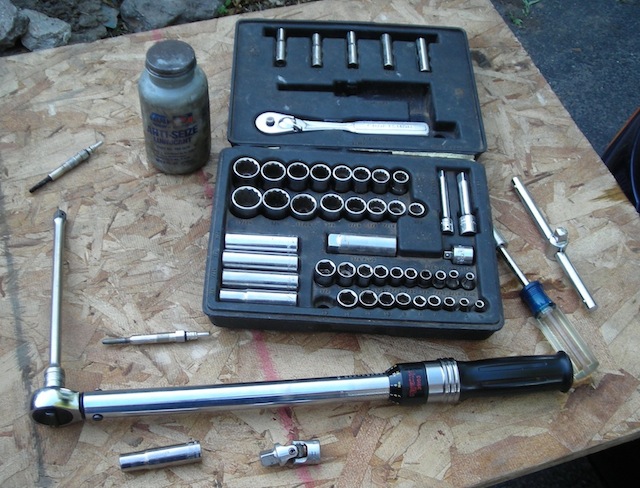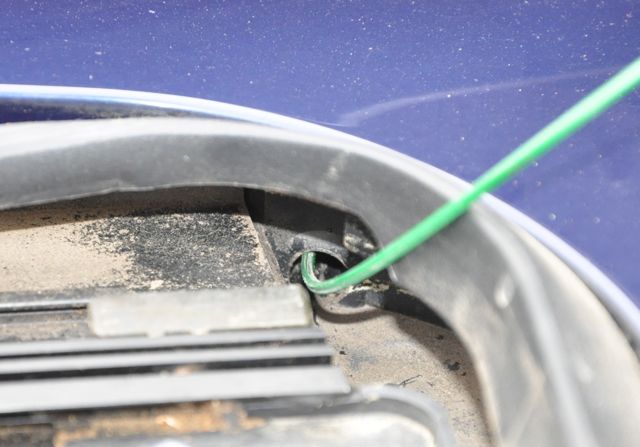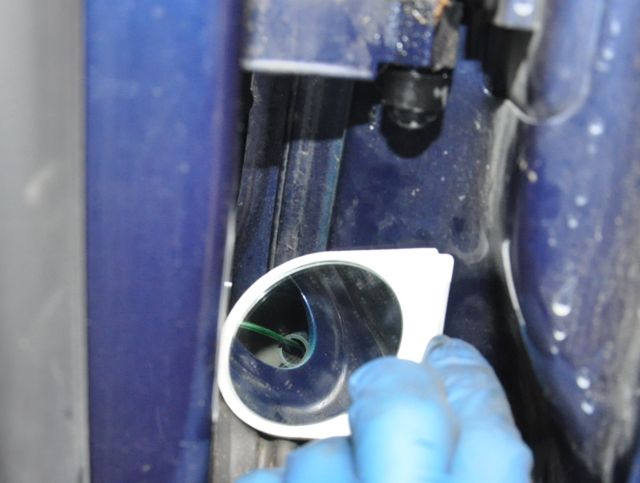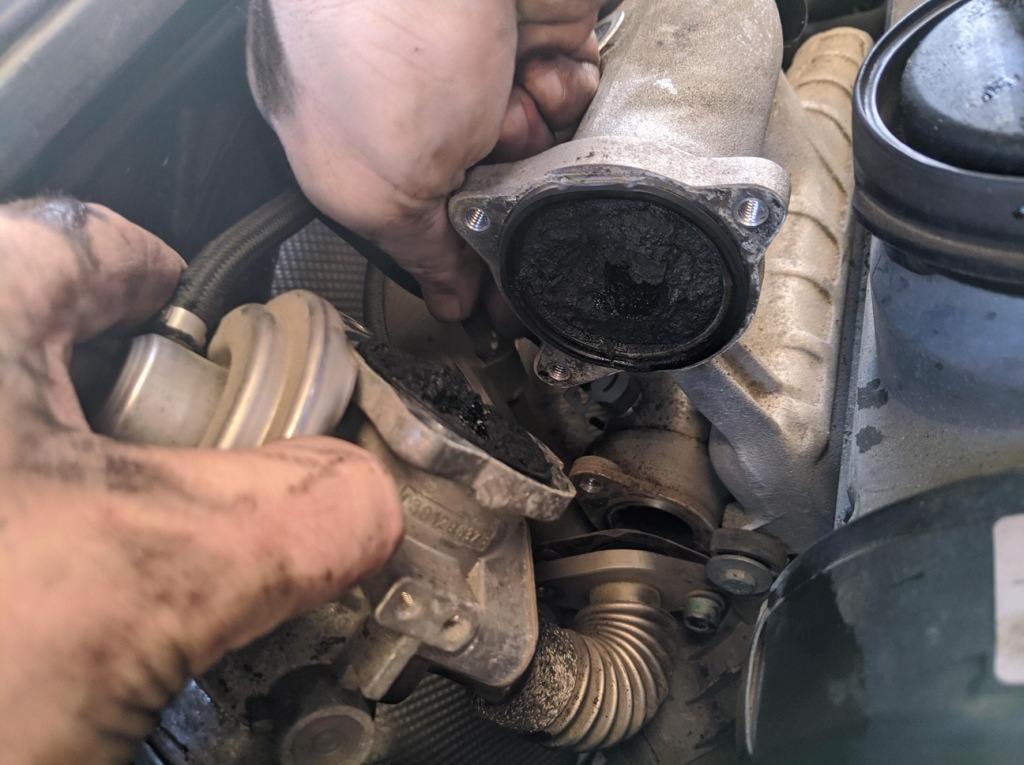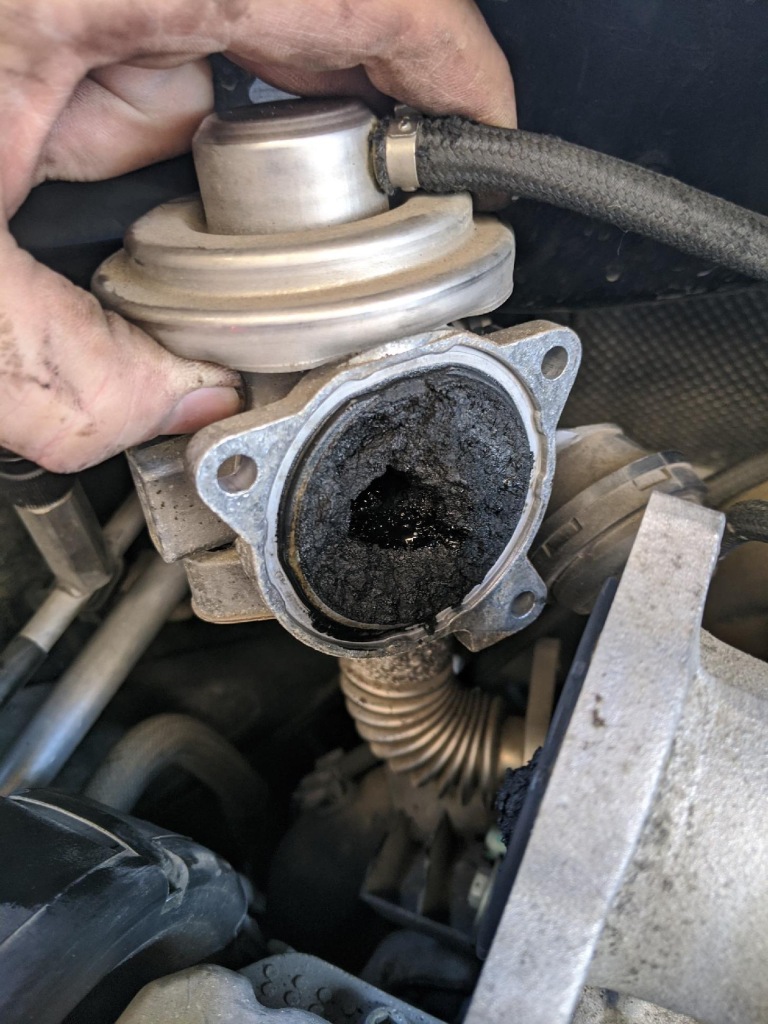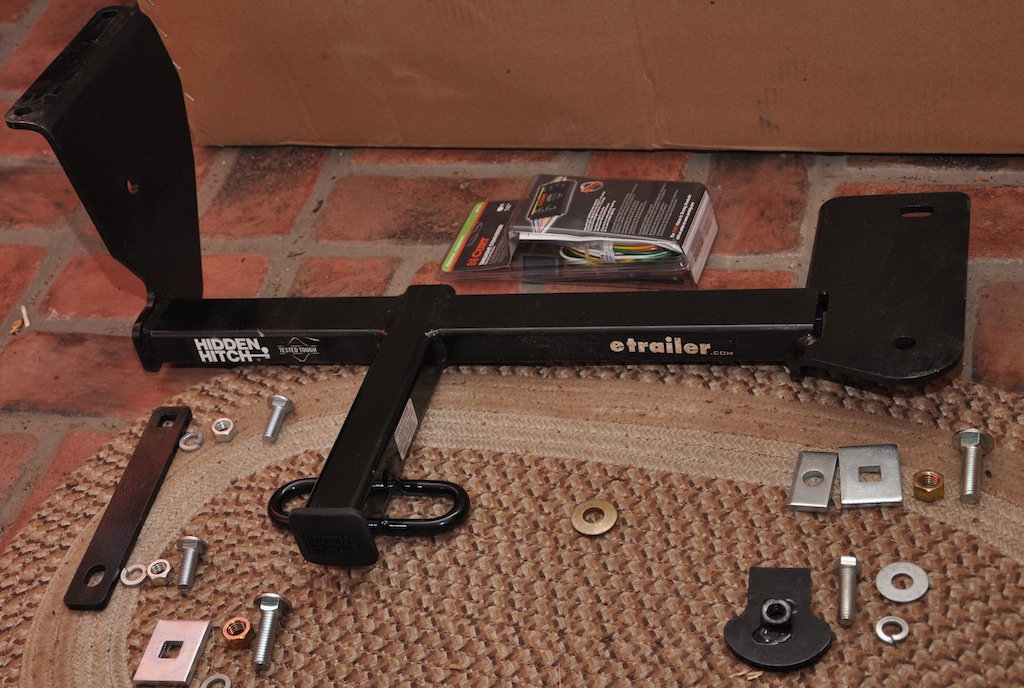
Parts received in the box. I ordered the electrical adapter in the plastic box separately. The parts are laid out showing where they go during installation.
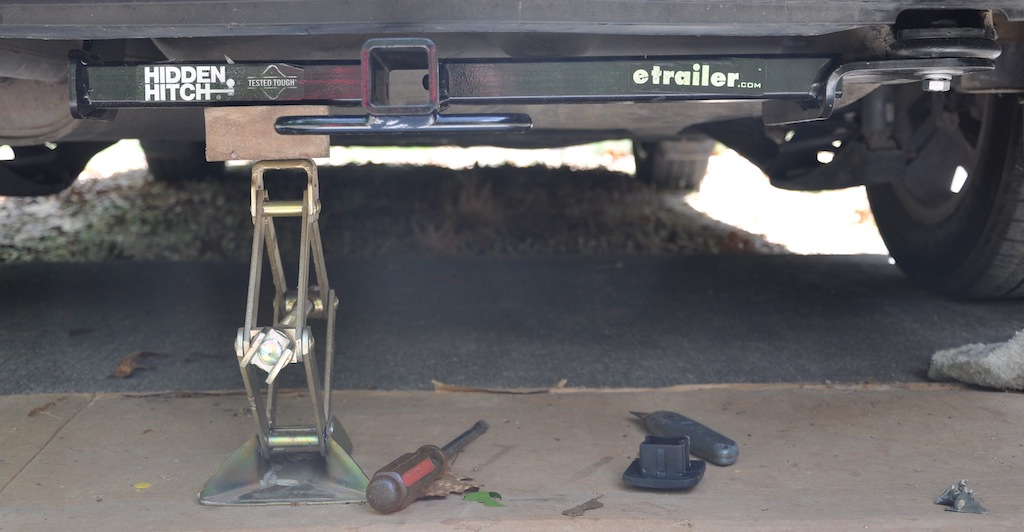
I used the car jack to hold the hitch into position for a trial fit. Right side is held in the tow loop using the plate and bolt provided in the kit.
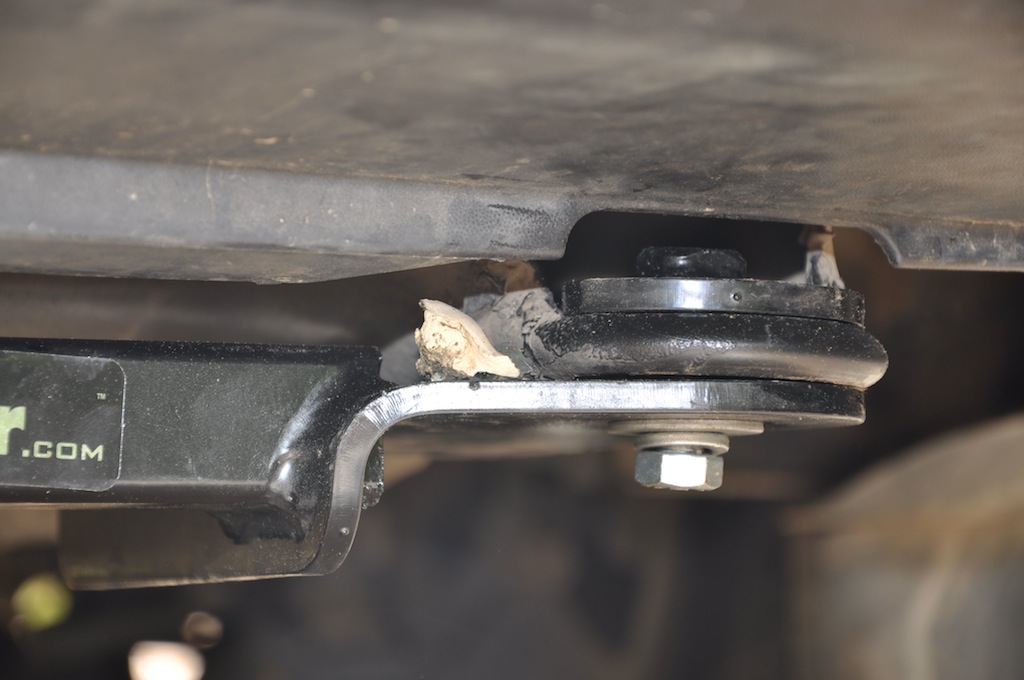
The
hitch and bolt plate did not fit flat against the tow loop because a
blob of body sealant was in the way. I used an X-acto knife to
cut away the body sealant (shown as the white piece in photo).
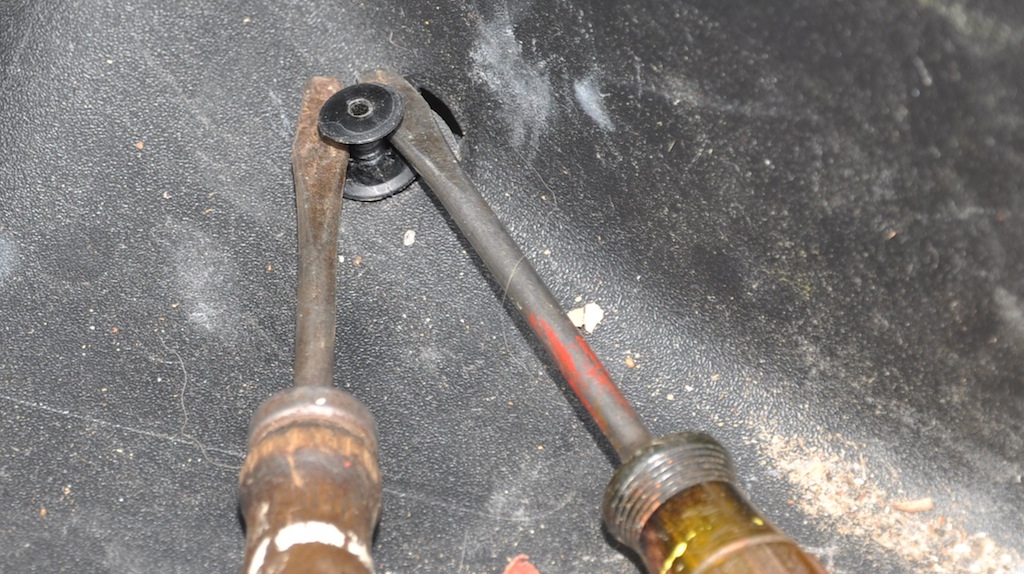
The rearward plastic storage bin behind the spare tire needs to be temporarily removed to access the metal floor for drilling. Use screwdrivers under each side to not break the plastic retainers when you pull them up.
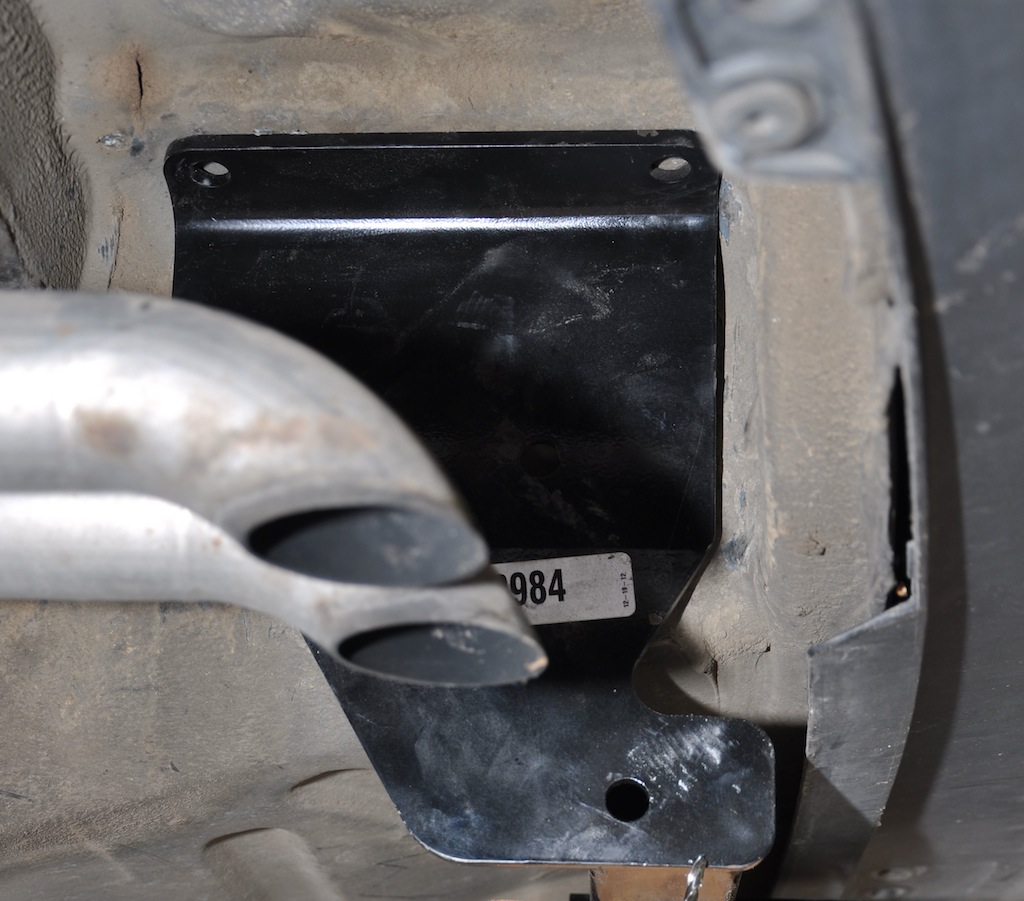
This picture looks under the car from the left side. Hitch needs to fit tight UP and RIGHT against the body because bolts will be put in both ways. Adjust fore and aft to get the hitch coming straight out the back.
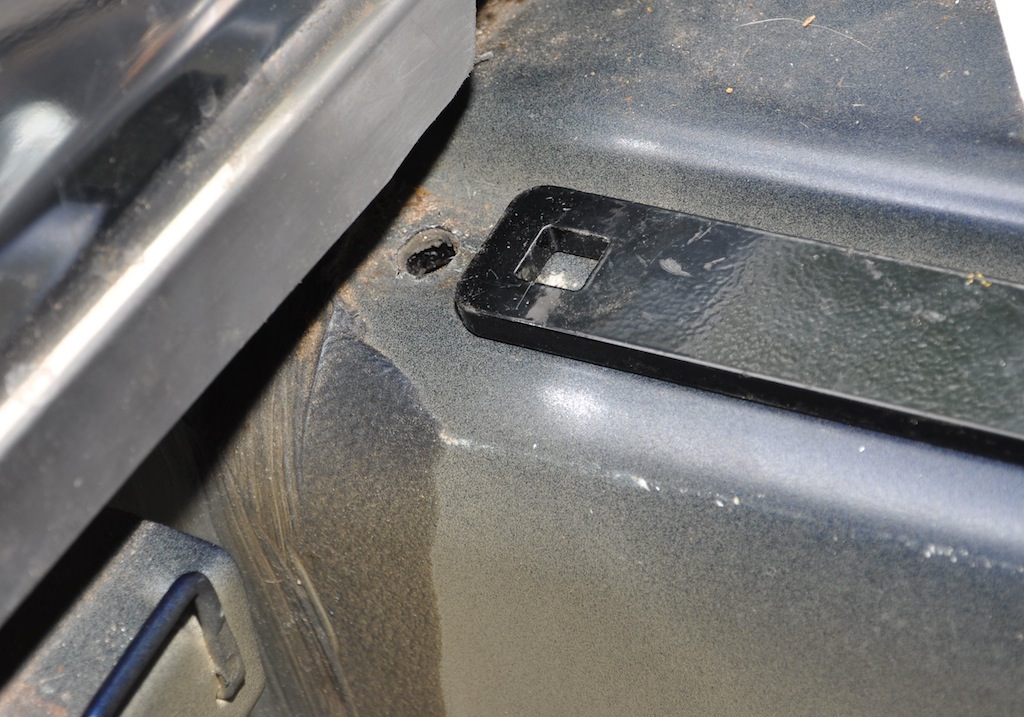
This picture shows the back left hole and the plate that will be installed over it. I drilled the holes with a smaller drill and then drilled them out to the final diameter. I used an even larger drill to de-bur the final hole top & bottom. As you drill each hole, put a bolt in it to hold the parts in exact position so the next hole will be drilled in the right place.

This picture shows the left side bolts and interior mounting plate temporary installed. After drilling holes, install the pieces at least finger tight to make sure everything fits. I had to adjust one hole with a round file about 1/32". The back bolt is seen mirror imaged in the stainless steel molding over the tailgate. I had to use a metal grinder and remove maybe 1/4" of stainless to clear the plate and the bolt head.
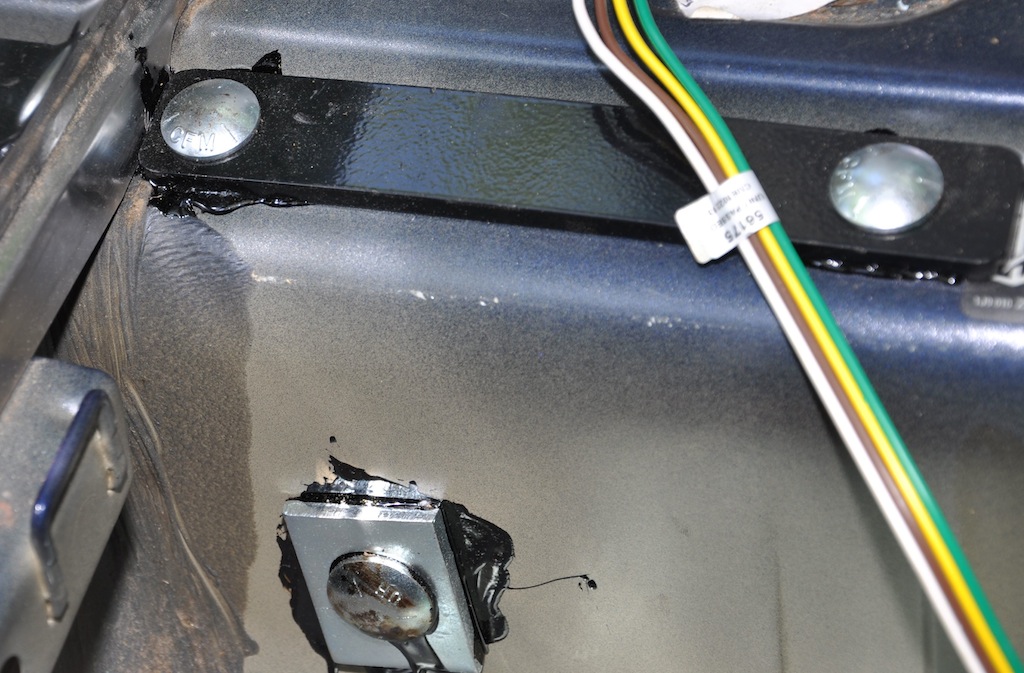
Left side bolts in final installation
- with black tar water proofing
and rust proofing. Temporary installation was removed and each
bolt/nut was coated with black tar and re-installed. After all five bolts were installed
(3 left, 2 right), all were torqued to specification.
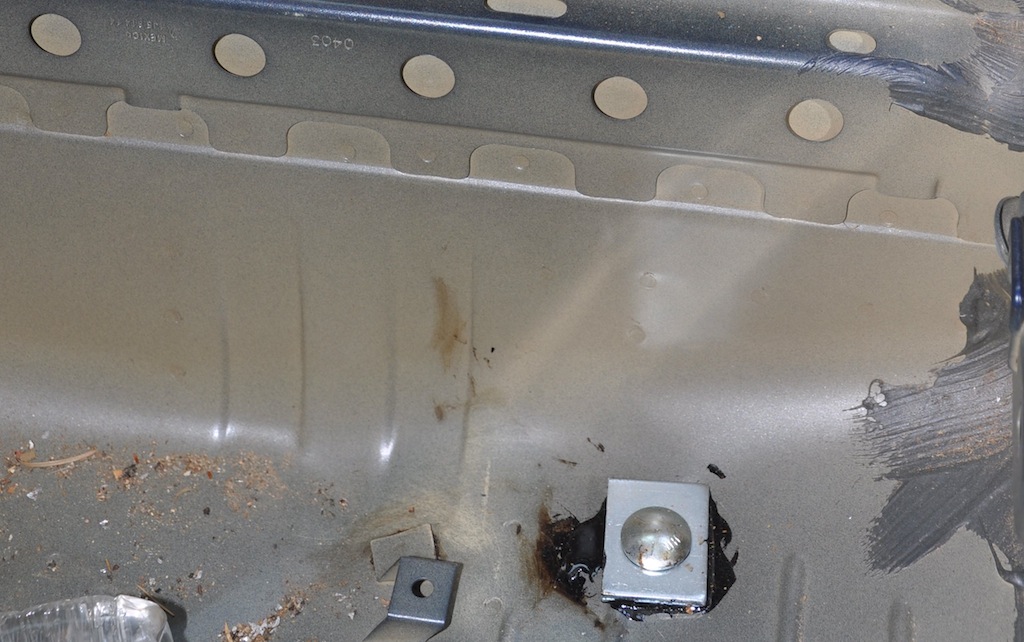
The
right side has only one new bolt hole required. In addition to the
visible plate and nut on bottom, there is a spacer plate wedged between
body frame panels. I used a long flat-blade screw driver to
gently tap
it into place from underneath and behind the car. Get the hole
alignment right on the first time
because there is no way to remove
the spacer once jammed into place.
I would advise peeking in the trunk, and when you see the bolt hole
starting to line up, put a screwdriver in the hole and start to wiggle
it in alignment as you put the last few hammer taps into place.
Shows the bottom side after final
installation, including hardware 100% covered in black tar water
proofing.
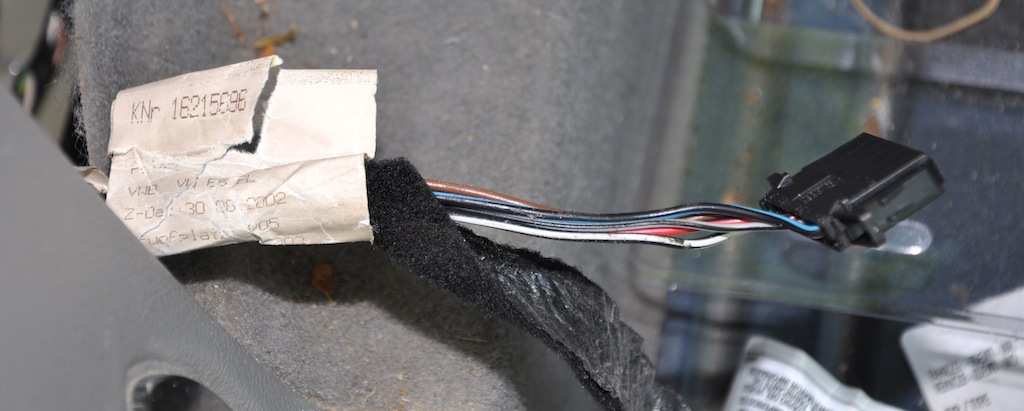
This shows the wiring harness disconnected from from the rear left tail light, and before I spliced into the wires.
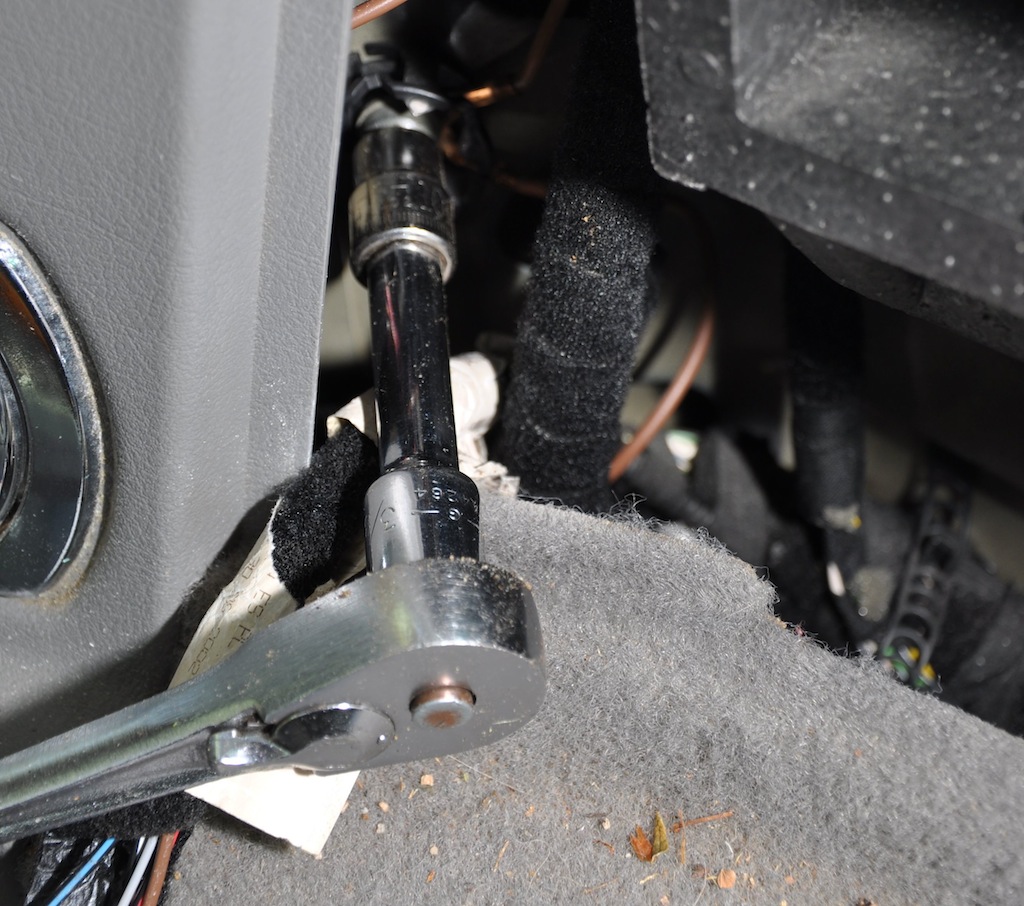
This picture looks backwards and left into the rear tai light area. I used a socket set to remove the nut from the bolt stud that provides a grounding point.
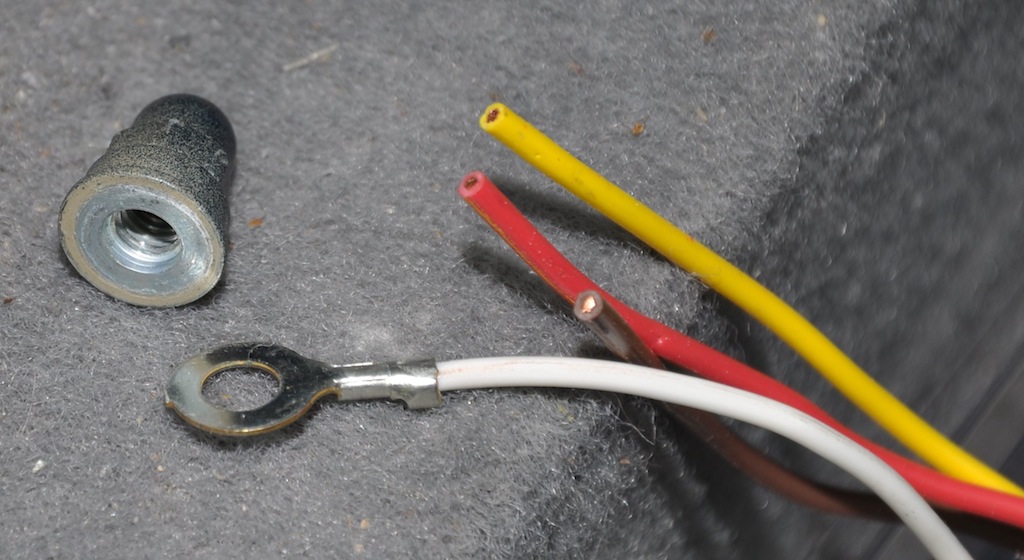
Wires from the electric adapater that connect on the left side, and the cone nut that came off the grounding stud by the back left tail light. The white ground wire came with a connector installed.
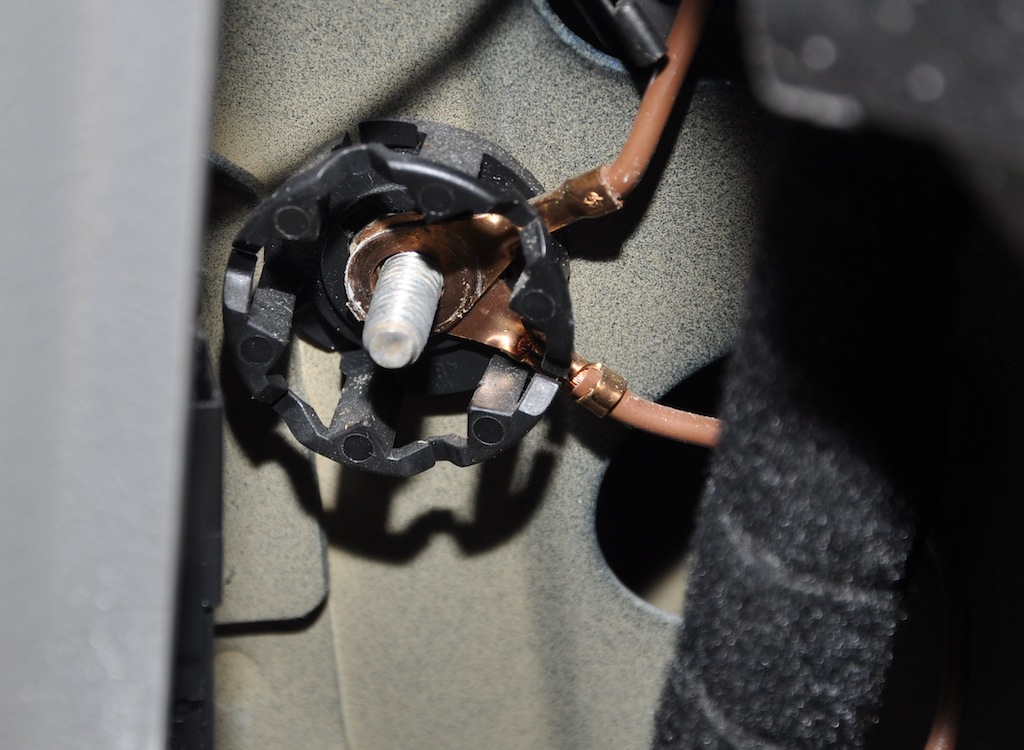
The left rear ground bolt after the nut was removed. The white ground wire was slid onto the same stud and the nut was replaced.
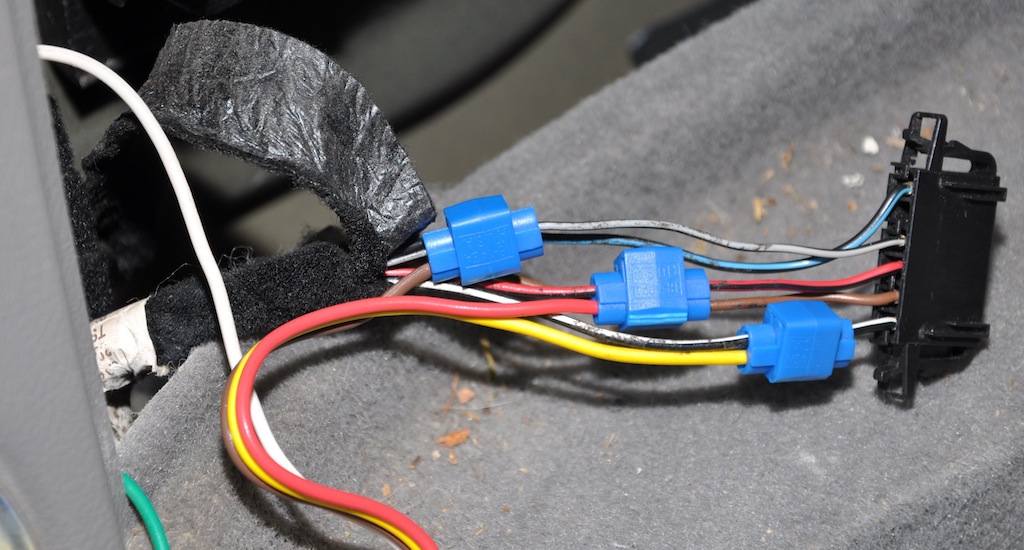
Left side wire installation for left running light, turn light and brake light. Notice how the wire lengths and wire splices were staggered so the splices don't bump into each other. The white wire goes behind the panel to the grounding bolt.
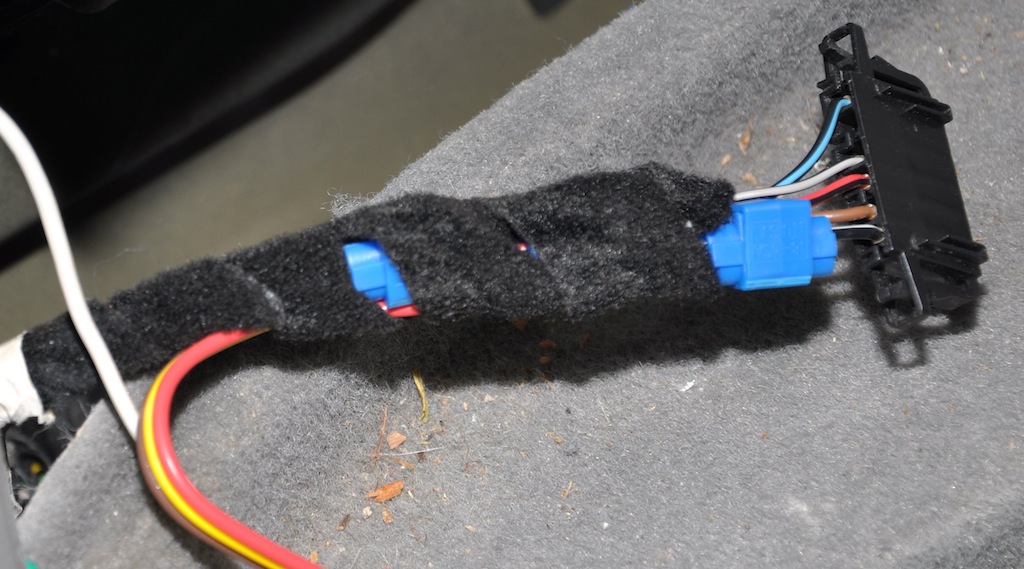
Driver side re-wrapped after splicing. Notice how the staggered splices fit to make a tight wire bundle instead of a bulge.
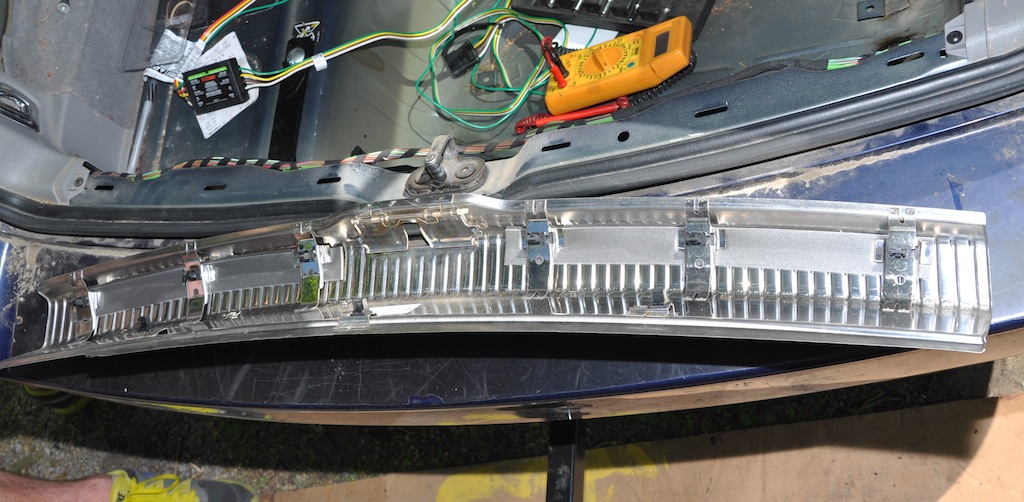
Back stainless steel tailgate removed to route the green right turn wire underneath it to the right side of the car.
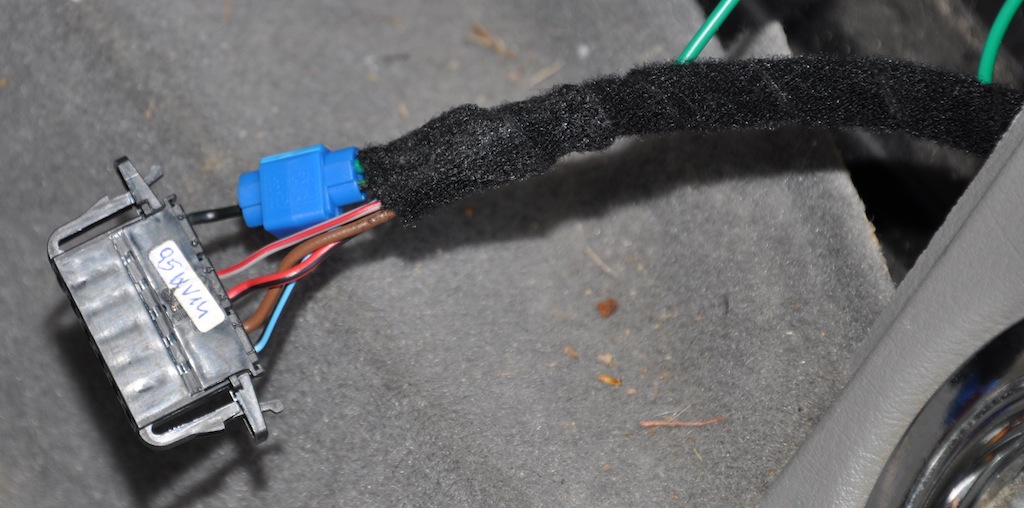
Passenger side wiring rewrapped after splicing in the green wire. I needed to use a coat hangar wire with hook on the end to wiggle the long green wire (right turn signal) from the tail gate area into the right tail light area - it's a tight fit due to body panel pieces.
The folks at etrailer.com were phenomenal. I could not read the b&w low contrast copy of a color instruction sheet. They said my brand of hitch was actually made by Reese and they found another instruction sheet and emailed a copy. I advised it had different fittings than mine and a day later I received this hand-noted high contrast instruction sheet for my hitch (click on the image to get a pdf copy). Perfect! Yea for etrailer.com!
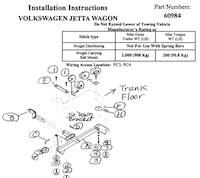
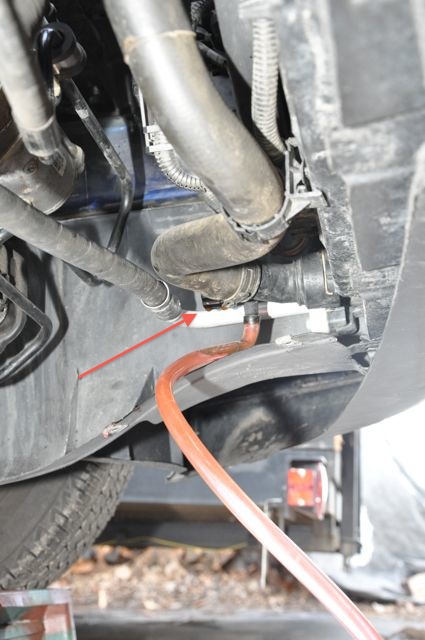
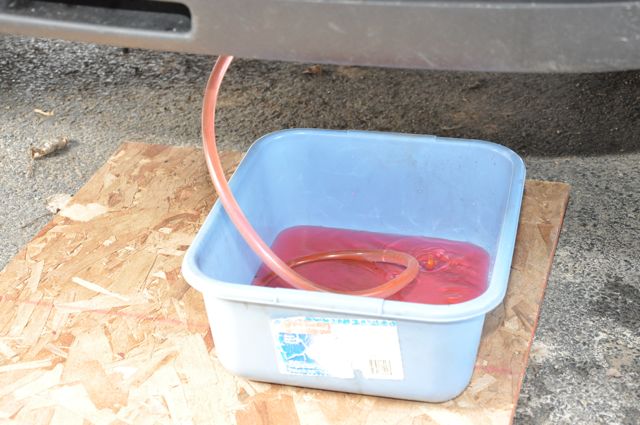
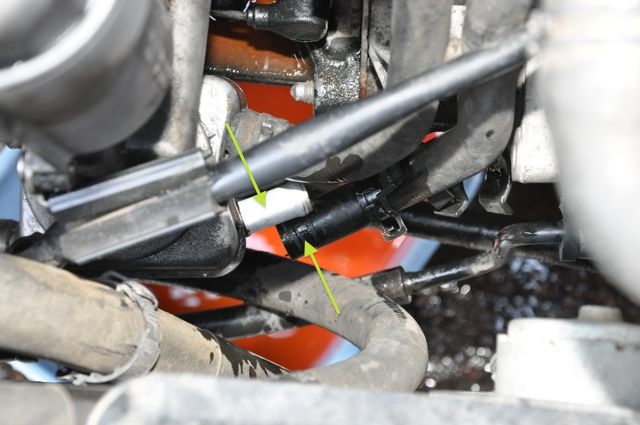
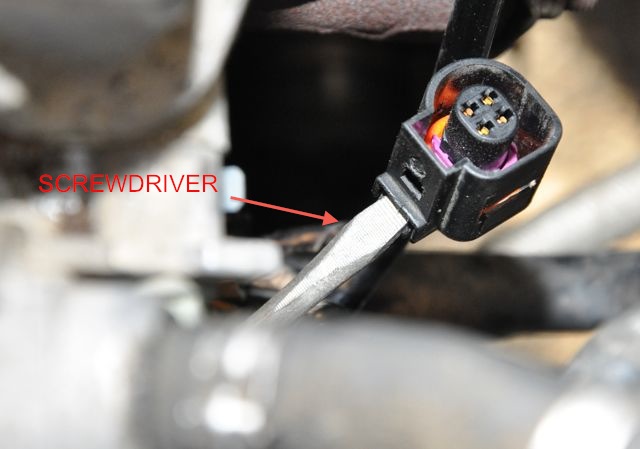
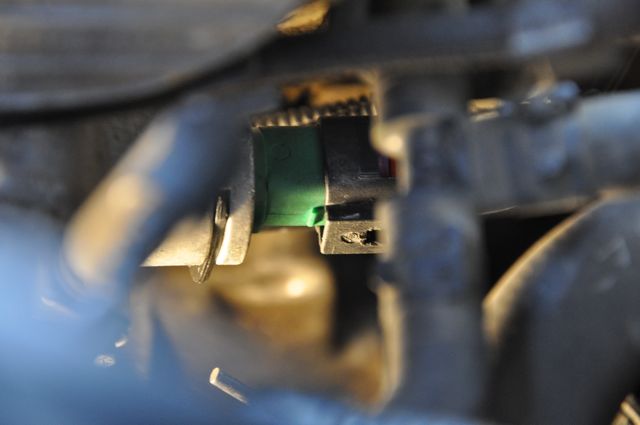
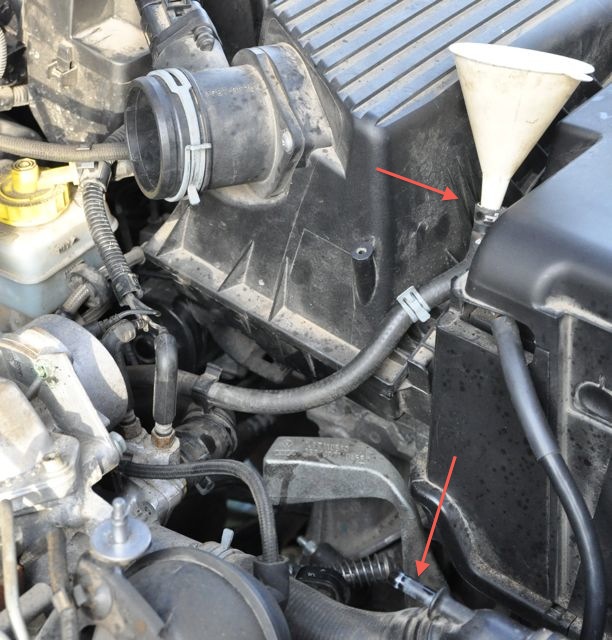
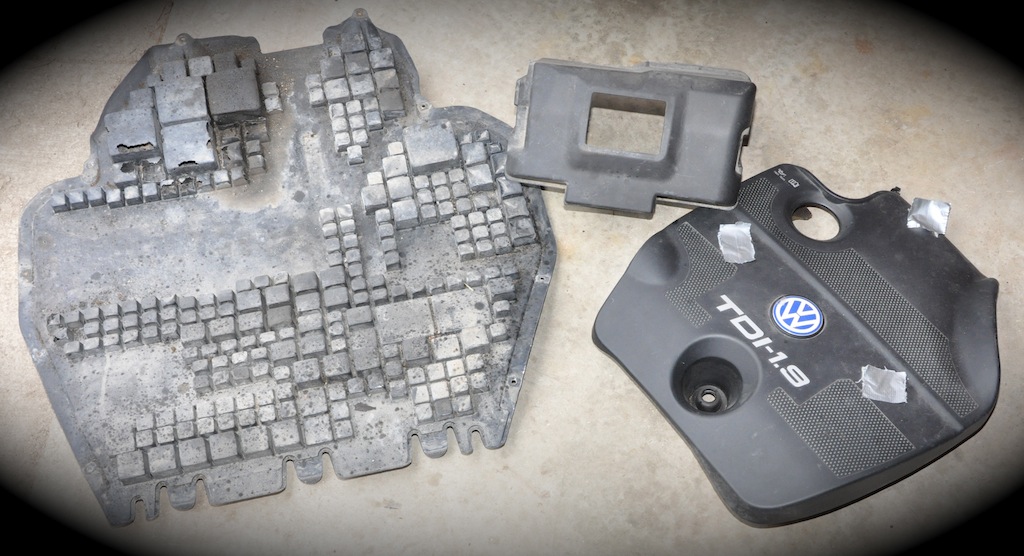

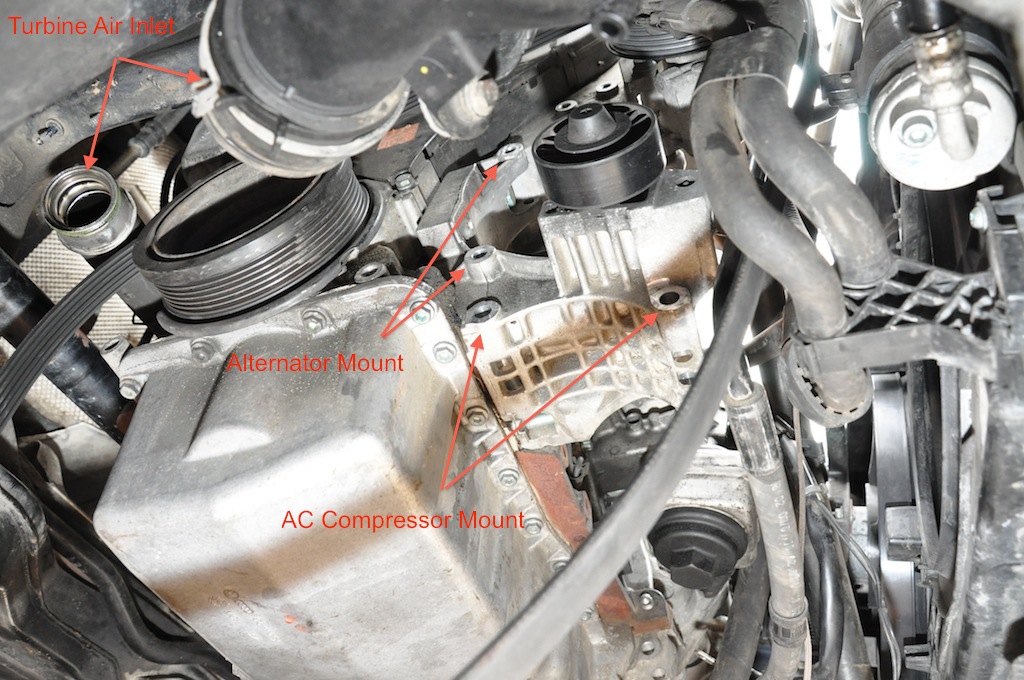

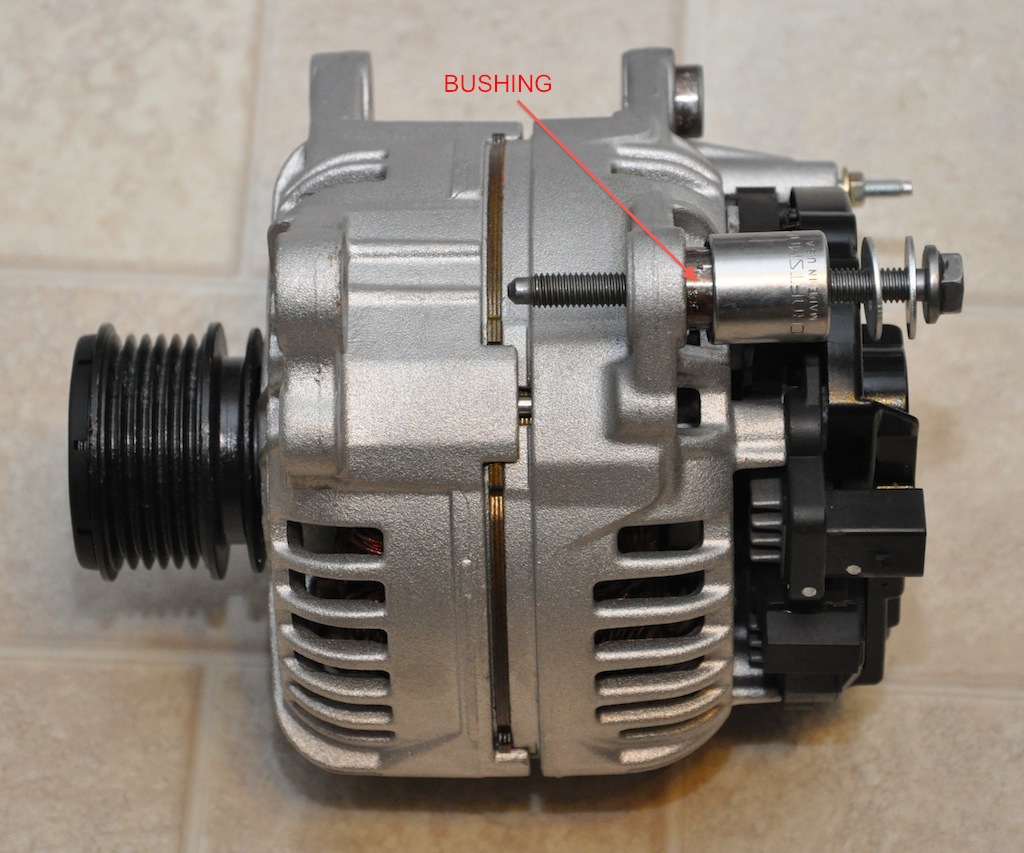
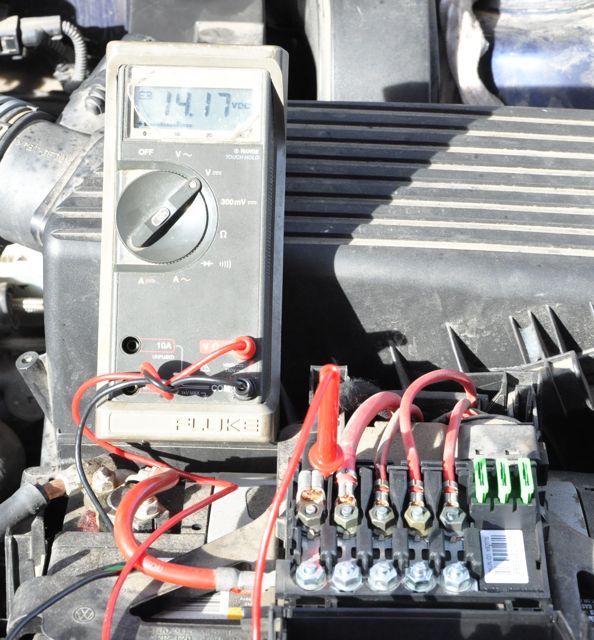
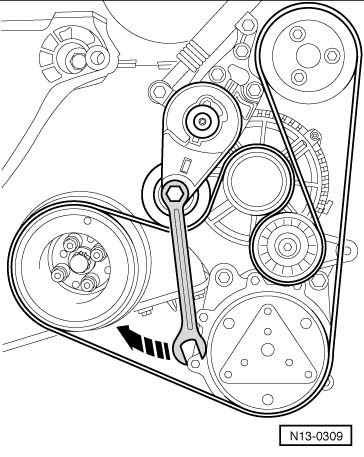
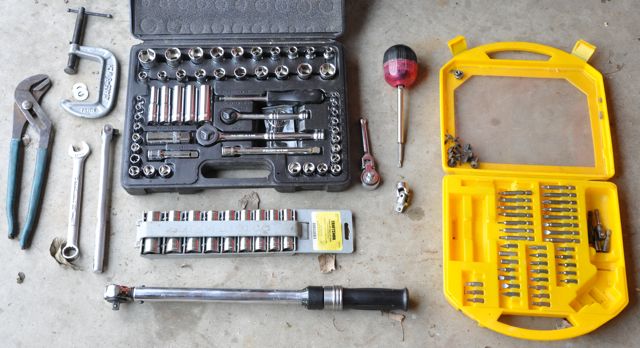 Here are the tools I used to replace the alternator. It would
help a lot to pre-position these. From left to right...
Here are the tools I used to replace the alternator. It would
help a lot to pre-position these. From left to right...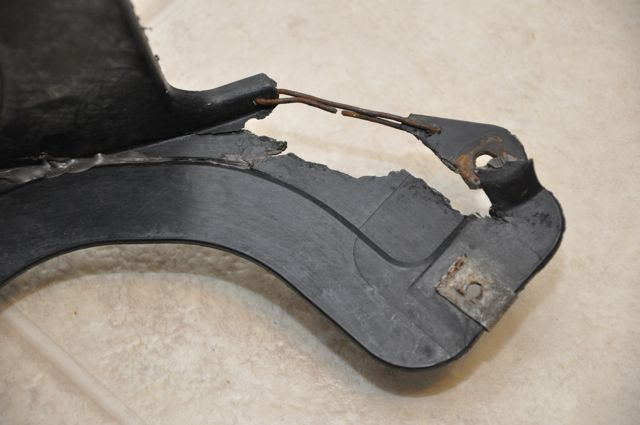
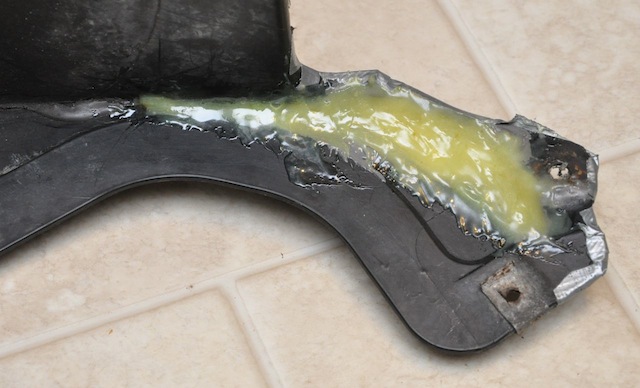
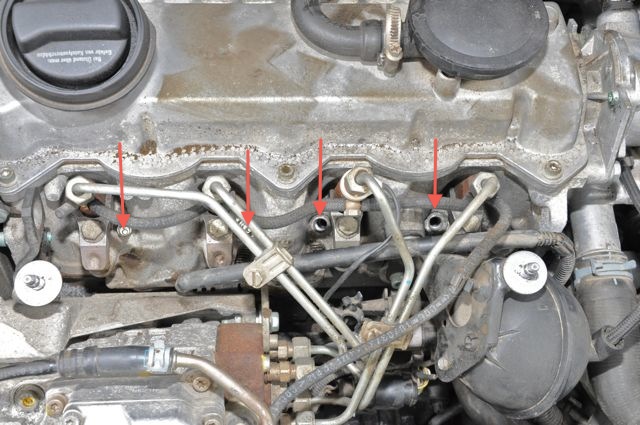
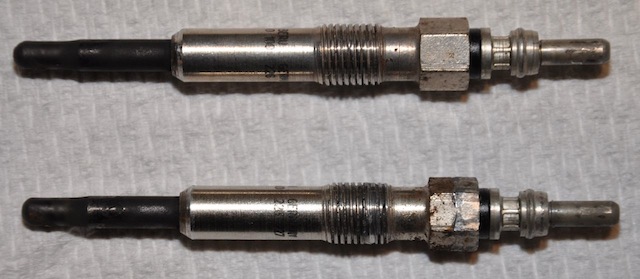
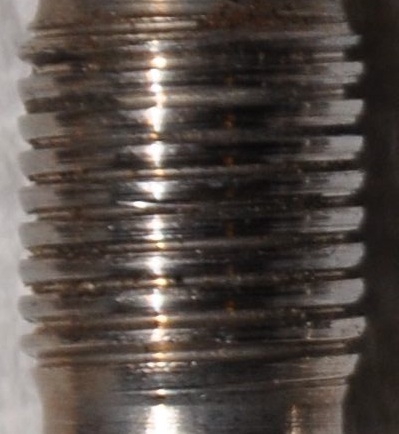
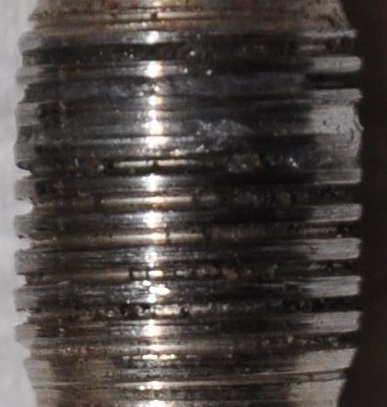
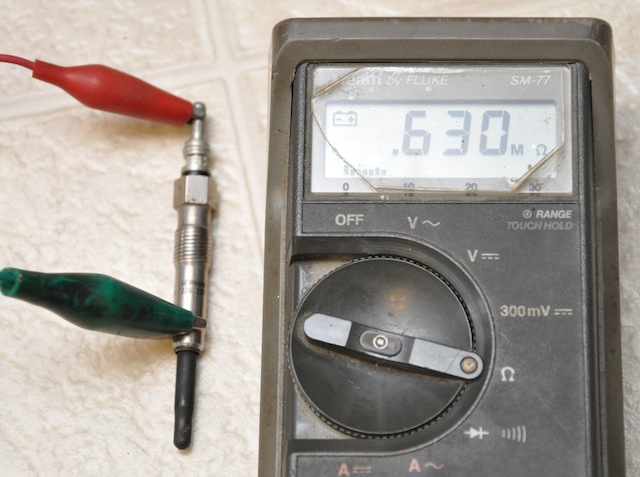
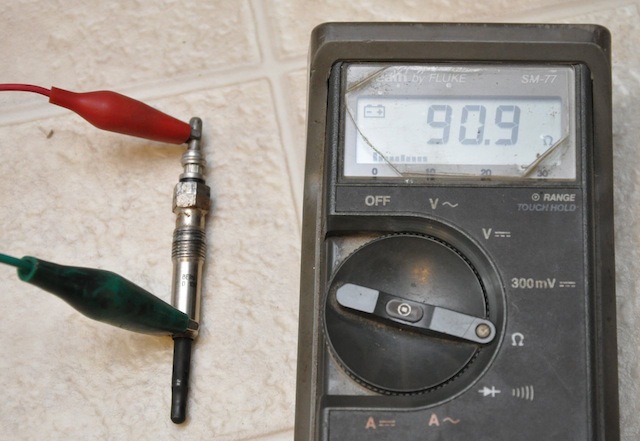
 Buying new one. The two options are 92 mm and 76 mm in
length. Read the fine print in the ads I clipped. I DO have 3 glow plugs in my coolant line going into the
engine so you'd think to buy the one on the left ("For vehicles with
glow plug coolant heating"). But as you can see from the ad photos,
that doesn't match and I need the ones on the right - the thinner longer 92mm
version.
Buying new one. The two options are 92 mm and 76 mm in
length. Read the fine print in the ads I clipped. I DO have 3 glow plugs in my coolant line going into the
engine so you'd think to buy the one on the left ("For vehicles with
glow plug coolant heating"). But as you can see from the ad photos,
that doesn't match and I need the ones on the right - the thinner longer 92mm
version. 